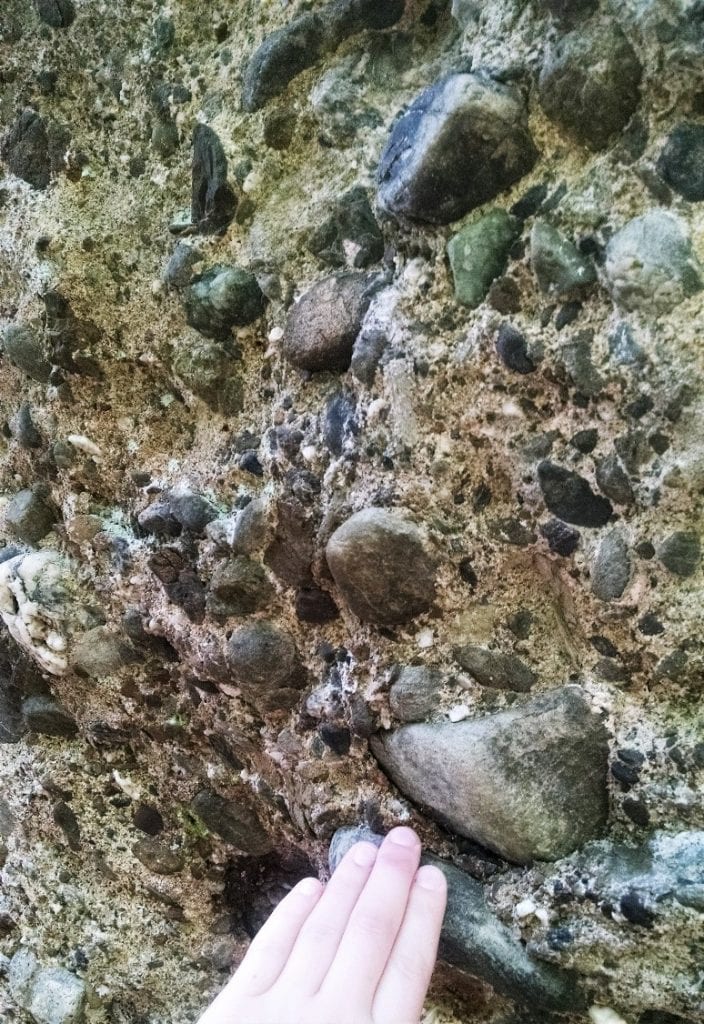Story by Sarah Francis
Many Bellinghamsters can recall going for a walk at Larrabee State Park and admiring the beautiful sandstone formations along the beach. The interesting structures are formed by a process known as “honeycomb weathering” and draw the attention of many visitors, but these rocks tell an even deeper story beyond the surface.

Photo by Alan Majchrowicz
Today, I want to dig in (pun intended) to the origins of the bedrock in Bellingham. The sandstone found at Larrabee State Park is part of the Chuckanut Formation, which is a layer cake-like mass of sandstone, shale, conglomerate, and thin coal seams (!!).
The Chuckanut Formation tells a fascinating story about what this area was like 50 million years ago. This was during a time period called the Eocene, about 15 million years after the dinosaurs went extinct. During this time, a wide, flat river system meandered towards the coast.

Sadly, this image was not taken during the Eocene, but is a modern example of the kind of environment that may have formed the Chuckanut Formation.
The river carried sandy sediments eroded from the mountains to the east, depositing fine layers that later turned into the Chuckanut sandstone.

Behold, beautiful sandstone layering in the Chuckanut Formation. Photo taken along the Rock Trail in the Chuckanut Mountains. Image by Sarah Francis.
The presence of coarse-grained conglomerate hints at a tumultuous past. Conglomerate is composed of a mixture of large and small grains, showing that large and sudden floods frequently roared through the river flat.

A perfect example of coarse-grained conglomerate in the Chuckanut Formation, with my hand for scale. Photo taken along the Rock Trail in the Chuckanut Mountains. Image by Sarah Francis.
The climate was subtropical, supporting numerous swamps around the river flat. Year after year, plants died and dropped their leaves, forming layer upon layer of dead plants in these swamps. The acidic environment halted decomposition, preserving almost all of this plant matter. Over millions of years, these layers of dead plants were compressed into peat, and further compressed to form coal. A “coal seam” is a layer of heavily compressed dead plants. Coal is found in thin seams within the Chuckanut formation, and has been exploited by humans from mines in and around Bellingham.

An artist’s rendition of what a subtropical swamp in the Eocene may have looked like.
In several locations, beautifully-preserved fossils of these ancient plants can be found within the Chuckanut Formation. There are palm fronds galore, ancient ferns, alders, and sycamores, and even some footprints from prehistoric birds and reptiles.

Here’s a palm frond from the Chuckanut Formation, with a hammer to show scale.
To learn more about the Chuckanut Formation, check out this recent publication by the Department of Natural Resources, or check out some cool field trip sites on your own (such as Racehorse Creek, where you can flip over rocks and find all sorts of fossils in the riverbed). Maybe you’ll even find your very own palm frond fossil.